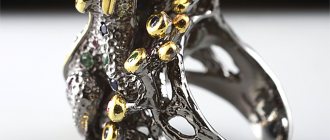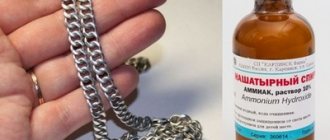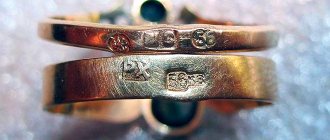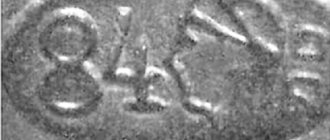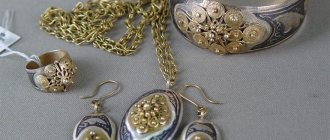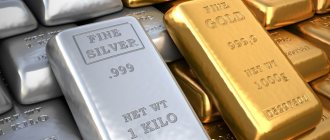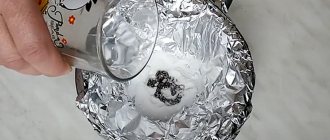Old Soviet radio components contain technical silver, which acts not as a precious metal, but as a technical metal.
High-quality technical silver is found in wires, batteries, contacts, and microcircuits. There is no definition for such a precious metal. We can say that technical silver is any silver that is used in radio engineering production.
Properties and features of technical silver
When we talk about silver, we most often mean its use in jewelry. Silver is not only a beautiful metal, it also has unique properties for technical needs. Among all metals, it has the highest coefficient of thermal and electrical conductivity, and is also inert. Such characteristics allowed it to find wide application in industry. This kind of silver is called technical silver. Technical silver is contained in equipment and after it fails it is sent for recycling.
Where can you buy or sell
There are organizations involved in purchasing, including technical silver, online auctions, and pawnshops. Most of them operate illegally (without a license), and an attempt to sell independently mined silver may come to the attention of the Department for Combating Economic Crimes (OBEP).
How much does 1 gram of tech cost? silver for today
The value of silver on the world market is rising and today it is considered a good investment. A chart will help you track price fluctuations.
| Price 999 standard according to the Central Bank | Market value of the sample today | Scrap price | Price in jewelry |
What are the differences from jewelry?
What is technical silver and what is the fundamental difference between these two types of metal? The differences are minor, but they are there:
- The first obvious difference is the scope of its application: jewelry silver is used for making jewelry, technical silver is used for industrial purposes.
- The requirement for technical silver is that the alloy must achieve the required physical characteristics for a specific application: resistance, thermal conductivity, etc. In a metal used in jewelry, appearance, wear resistance, and the ability to create complex jewelry play a role.
- Pure silver is often used in radio electronics and technology, but jewelers never use it because it is too soft.
Where is it used? Silver has a very wide range of applications. In addition to jewelry, it can be found in dentistry, medicine, and the production of coins and awards. The largest use of silver is in industry:
- It is used in electrical engineering in the manufacture of batteries, wires, coating of radio components, and contacts.
- In electronic technology, silver is used for soldering coatings, making solders, contact conductors, and more.
- The metal is also widely used in the food industry. It is used in equipment for preparing baby food.
Technical silver can be called two types of metal:
- silver used in industry;
- secondary, obtained by recycling devices that have become unusable.
In the USSR, devices very often contained radioelements containing precious metals. Therefore, in each passport for the device, data on their availability and weight were indicated. At each enterprise there was a special service that, when decommissioning a device before it was sent for scrap, had to remove all elements containing precious metals and send them for recycling.
Once the scrap silver was recovered and processed, it could have different compositions depending on specific needs. The composition of such alloys was standardized, but did not correspond to jewelry samples. After this, the alloys were sent to refineries.
Pure silver can be used in production, but it is often used in the form of alloys. Therefore, the price of such silver will differ. There are several dozen standards, GOSTs, by which the alloys of silver used are determined.
Peculiarities
Technical silver is a substance that contains about twenty alloys. It has a number of features that distinguish it from other elements:
- quite high thermal conductivity and electrical conductivity;
- solidity and resistance to destruction;
- elasticity and relative softness;
- ability to reflect light;
- static to inert reagents;
- low melting point.
It is these details that characterize the demand for technical silver in various industries . Its physical and chemical properties, such as a long period of use and anti-corrosion, form a wide range of applications.
Very often used in the following areas: medicine, aviation, mechanical engineering and electrical engineering.
In pawnshops, the price for one gram of such metal will be about thirty rubles.
Radiant silver
During Soviet times, military factories often used irradiated silver. This is a special type of technical silver coated with radium. Radium is a toxic and radioactive element and has a slight glow-in-the-dark effect. Therefore, it is used in military affairs, for example, for illuminating aircraft instruments.
Radium was added to industrial silver, and such scrap should not have ended up on the recycling market, but it did. It was illegal, but such silver was mined and melted down into products. After some time they stopped producing it, but when buying scrap silver you should be careful, and it is better to have a dosimeter with you.
How to determine silver and how is refining carried out?
You can independently determine whether the alloy contains silver by:
- Take a drop of nitric acid and place a piece of the alloy to be determined in it. If smoke comes out, this indicates the presence of silver in the alloy; when salt is added, silver will precipitate.
- Drop a solution of sodium bichromate and nitric acid in equal quantities onto the metal. The formation of a red solution on the surface indicates a high concentration of silver.
Scrap silver from radio components
Silver is extracted from radio components and other elements containing it using refining. Depending on the starting alloy and production volumes, one of three methods is chosen:
- cupellation;
- chemical method;
- electrolytic method.
The most common is the latter. It is convenient because it allows you to obtain a high-quality alloy, but it has limitations in application. For the electrolytic method, it is necessary that the alloy consists of more than 80% silver. In addition, it should not contain particles that are magnetic, such as iron.
Cupellation is somewhat less successful; with this method it is impossible to separate silver from other precious metals: gold, platinum, palladium - but it is simple and inexpensive.
Industrial silver can now be mined by anyone at home in artisanal conditions, which is what many people do. It does not require much expense or skill. Of course, the price of silver is much lower than that of gold, but its scope of application is wider. This means that it is much easier to obtain secondary raw materials containing this noble metal. In addition, experts believe that prices for it will rise and even reach the prices of gold.
Source
Types of silver
It is important to know that silver comes in only one color, which is what this precious metal is and differs from other precious metals, such as gold. There are several types of silver:
- Sterlingov;
- Blackened;
- Oxidized;
- Filigree;
- Matt;
- Coin.
Sterling silver is 925 standard; it is most often used for the production of jewelry, decorative items (figurines, candlesticks), tableware, and dishes. Products made from sterling silver are dazzling white, with a pleasant shine, reliable and durable. This type of silver got its name from the one-pound (1 sterling) silver coin.
Blackened silver is produced by engraving pure silver and then covering it with niello, which is an alloy of silver sulphide, lead, and copper. After the niello is melted, black lines remain on the silver. Blackened silver items do not require cleaning. This type of metal is used to make jewelry, religious objects, amulets, decorative items, and sometimes cutlery handles and decorative elements of utensils are blackened.
Oxidized silver is a fairly new technology (a combination of silver and sulfur), which replaces blackening, while you can achieve the effect of aging silver products, therefore, when buying blackened silver or being offered “antique silver” things, be careful, it is quite possible that They are trying to sell you oxidized silver goods. Of course, this is also silver, but its price should be much lower. Small jewelry is usually made from this metal and is used in the restoration of antiques.
Matte silver is a product coated with enamel. They are used mainly for making jewelry and religious objects. These things look simply great and original. Matte silver is durable.
Application of silver in the electrical industry
The metal that is used in the production of parts and elements for the electrical industry is called technical; it is most often pure 999 silver; sometimes alloys of silver with other substances are used. Electrical silver must have excellent electrical conductivity, thermal conductivity, and light reflection. It is used to make silver wire, solders, high-quality electrical contacts, silver-plated conductive contacts and other critical parts.
The following items are made from silver or silver plated:
- Connectors;
- Diodes;
- Transistors;
- Resistors;
- Microcircuits;
- Ceramic capacitors;
- Contact relays;
- Resistance;
- Circuit breakers;
- Rechargeable batteries;
- Monocore cables.
Silver is an exhaustible type of natural resource, deposits are being depleted, but the metal is in demand, and not only for the production of jewelry, but also necessary for various industries, so today, recycling of this noble metal is more important than ever.
Source
Silver (CAS number: 7440-22-4) is a ductile noble metal of silvery-white color. Denoted by the symbol Ag (Latin: Argentum). Silver, like gold, is considered a rare precious metal. However, among the noble metals it is the most widely distributed in nature.
According to the periodic system of chemical elements by D.I. Mendeleev, silver belongs to group 11 (according to the outdated classification - a secondary subgroup of the first group), the fifth period, with atomic number 47.
Silver gets its name from the Sanskrit word “argenta”, which means “light”. The Latin “argentum” comes from the word argenta. The light shine of silver is somewhat reminiscent of the light of the Moon, therefore, during the alchemical period of the development of chemistry, it was often associated with the Moon and designated with the sign of the Moon.
The average silver content in the earth's crust is 7•10–6% by weight (70 mg/t). Its maximum concentrations are found in clayey shales, where they reach 1 g/t. The average silver content in sea water is 3*10-8%.
The facts of finding huge nuggets of silver are known and documented. For example, in 1477, a silver nugget weighing 20 tons was discovered at the St. George mine. In Denmark, in the Copenhagen Museum, there is a nugget weighing 254 kg, discovered in 1666 at the Norwegian Kongsberg mine. The vein-native silver formation, discovered in Canada in 1892, was a slab 30 meters long and weighing 120 tons. However, it should be noted that silver is chemically more reactive than gold and is therefore less common in its native form.
Silver deposits are divided into actual silver ores (silver content above 50%) and complex polymetallic ores of non-ferrous and heavy metals (silver content up to 10-15%). Complex deposits provide 80% of its production. The main deposits of such ores are concentrated in Mexico, Canada, Australia, Peru, USA, Bolivia and Japan.
Physical properties of silver
Natural silver consists of two stable isotopes 107Ag (51.839%) and 109Ag (48.161%); More than 35 radioactive isotopes and isomers of silver are also known, of which 110Ag is practically important (Thalf-life = 253 days).
Silver is an unusually ductile metal. It is well polished, giving the metal a special brightness, cut, and twisted. By rolling it is possible to obtain sheets up to 0.00025 mm thick. From 30 grams you can draw a wire more than 50 kilometers long. Thin silver foil appears violet in transmitted light. In terms of its softness, this metal occupies an intermediate position between gold and copper.
Silver is a white shiny metal, with a face-centered cubic lattice, a = 0.4086 nm. Density 10.491 g/cm3. Melting point 961.93°C. Boiling point 2167°C. Silver has the highest electrical conductivity among metals, 6297 sim/m (62.97 ohm-1•cm-1) at 25 °C. Thermal conductivity 407.79 W/(m•K.) [0.974 cal/(cm•°C•sec)] at 18 °C. Specific heat capacity 234.46 J/(kg•K) [0.056 cal!(g•°C)]. Electrical resistivity 15.9 nom•m (1.59 μm•cm) at 20 °C. Silver is diamagnetic with an atomic magnetic susceptibility at room temperature of -21.56•10-6. Elastic modulus 76480 Mn/m2 (7648 kgf/mm2). Tensile strength 100 Mn/m2 (10 kgf/mm2). Brinell hardness 250 MN/m2 (25 kgf/mm2). The configuration of the outer electrons of the Ag atom is 4d105s1. The degree of reflection of silver in the infrared range is 98%, and in the visible region of the spectrum - 95%. Easily alloys with many metals; small additions of copper make it harder, suitable for the manufacture of various products.
Chemical properties of silver
Pure silver is stable in air at room temperature, but only if the air is clean. If the air contains even a small percentage of hydrogen sulfide or other volatile sulfur compounds, then the silver darkens. 4Ag + O2 + 2H2S = 2Ag2S + 2H2O
When heated to 170°C, its surface is covered with an Ag2O film. Ozone in the presence of moisture oxidizes silver to higher oxides AgO or Ag2O3.
Silver dissolves in concentrated nitric and sulfuric acids: 3Ag + 4HNO3 (30%) = 3AgNO3 + NO + 2H2O. 2Ag + 2H2SO4 (conc.) = Ag2SO4 + SO2 + 2H2O. Silver does not dissolve in aqua regia due to the formation of a protective film of AgCl. In the absence of oxidizing agents at ordinary temperatures, HCl, HBr, HI also do not interact with it due to the formation of a protective film of poorly soluble halides on the metal surface.
Ag dissolves in ferric chloride, which is used for etching: Ag + FeCl3 = AgCl + FeCl2 It also easily dissolves in mercury, forming an amalgam (a liquid alloy of mercury and silver). Free halogens easily oxidize Ag to halides: 2Ag + I2 = 2AgI However, in the light this reaction is reversed, and silver halides (except fluoride) gradually decompose.
When alkali is added to solutions of silver salts, Ag2O oxide precipitates, since AgOH hydroxide is unstable and decomposes into oxide and water: 2AgNO3 + 2NaOH = Ag2O + 2NaNO3 + H2O When heated, Ag2O oxide decomposes into simple substances: 2Ag2O = 4Ag + O2- C Ag2O reacts with hydrogen peroxide at room temperature: Ag2O + H2O2 = 2Ag + H2O + O2.
Where is it used?
Technical silver has a number of physical and chemical characteristics that make it suitable for use in the manufacture of radio equipment. As mentioned above, the level of impurities in the metal is almost zero, however, to improve its utilization, nickel, copper, lead, etc. are added. This element is widely used in the production of solders.
The most famous copper/silver tandem is used to create all kinds of radio components, equipment for electronic equipment, as well as for electrical breaking moving contacts.
In the event that the amount of silver dominates, then such a connection is strong and anti-corrosion . With a high copper content, it can be subject to deformation and destruction. The alloy of palladium with a commercial metal is significantly superior to the example above. Due to the presence of sulfur in their compound, it is characterized by resistance to corrosion and less susceptibility to distortion.
SILVER ALLOYS
According to the Decree of the Government of the Russian Federation “On the procedure for testing and marking products made of precious metals,” the following samples of silver alloys were accepted: 999, 960, 925, 916, 875, 800 and 720.
Silver fineness refers to the ratio of precious metal to alloy. Alloys are metals that are added to a silver alloy to improve its physical properties. Copper is most often used as such an alloy, but other metals can also be used: nickel, cadmium, aluminum and zinc.
To determine the ratio of silver to alloy, Russia and a number of European countries have adopted the metric system, which determines the ratio of silver to 1000 units of alloy. According to this system, 925 silver standard means that per 1000 units of the alloy there are 925 units of this noble metal, or in other words, 1 kg of alloy will contain 925 grams of pure silver. An example of marking a silver product: СрМ 925 (an alloy of 92.5% silver and 7.5% copper).
The purest 999 silver is used only for the manufacture of bars and silver collectible coins, since in its pure form silver is an extremely soft metal, which is unsuitable even for making jewelry.
960 silver alloy. In terms of quality and mechanical properties, it is practically no different from pure silver. It is used in jewelry for the manufacture of delicate, highly artistic products.
925 silver alloy is also called “standard silver”. It has a noble silver-white color and high anti-corrosion and mechanical properties. Widely used in jewelry for making various decorations.
The 916-carat alloy is deservedly considered good silverware. It is this alloy that is used to make sets decorated with enamel or gold plated.
875 silver alloy is used in the industrial production of jewelry. Due to its high hardness, it is more difficult to machine than previous alloys.
Copper
Cu - copper.
The main metal of current conductors. Windings of electric motors, insulated wires, busbars, flexible conductors - most often it is copper. Copper is easy to recognize by its characteristic reddish color. Copper is quite resistant to corrosion.
Application examples
Wires.
The main use of copper is in its pure form. Any additives reduce electrical conductivity, so the core of the wires is usually pure copper.
Flexible stranded wires of various sections.
Flexible current conductors.
While conductors for stationary devices can, in principle, be made from any metal, flexible conductors are almost always made only from copper; aluminum is too brittle for these purposes. Contains many thin copper veins.
Heat sinks.
Copper not only conducts current 56% better than aluminum, but also has almost twice the thermal conductivity. Heat pipes, radiators, and heat distribution plates are made from copper. Since copper is more expensive than aluminum, radiators are often made of composites, the core is made of copper, and the rest is made of cheaper aluminum.
CPU cooling radiators. The central core is made of copper; it removes heat well from the processor crystal, and an aluminum radiator with developed fins already cools the core itself.
In the manufacture of foil printed circuit boards.
Printed circuit boards in any electronic device are made of a dielectric plate onto which copper foil is glued. All connections between the elements of the printed circuit board are made with copper foil tracks.
Ultra-high vacuum technology.
Of the metals and alloys, only stainless steel and copper are suitable for ultra-high vacuum chambers in instruments such as particle accelerators or X-ray spectrometers. All other metals in a vacuum evaporate slightly and spoil the vacuum.
X-ray tube anodes.
X-ray diffraction analysis requires monochromatic x-rays. Its source is often copper irradiated with electrons (spectral line Cu Kα), which also removes heat well. If another radiation (Co or Fe) is required, it is obtained from a small piece of the corresponding metal on a massive copper heat sink. Such anodes are always cooled with running water.
Interesting facts about copper
- Copper is a fairly expensive metal, so unscrupulous manufacturers try to save on it. They underestimate the cross-section of the wires (when it is written 0.75 mm2, but in fact 0.11 mm2). They paint the aluminum “copper-like” in the windings, outwardly the winding looks like copper, but when you scrape off the insulation, it turns out that it is made of aluminum. Both Chinese and domestic manufacturers are guilty of this; a cable with a cross-section of 2.5 mm2 may well turn out to have a cross-section of 2.3 mm2, so a safety margin and input control will not be superfluous. Of course, the reliability of contact in electrical fittings of a conductor with a cross-section of 2.3 mm2, designed for a conductor of 2.5 mm2, will be low.
- Copper colors flames green, a property that was used to detect copper in ores when chemical analysis was not available. A green trace in the flame is an indicator of the presence of copper. (but not always, boron ions can give a green color to the flame)
- Copper is a soft metal, but if you add at least 10% tin to copper, you get a hard, elastic alloy - bronze. It was the development of bronze production that served as the name for the historical era - the Bronze Age. The addition of beryllium to copper produces beryllium bronze, a durable elastic alloy from which spring contacts are made.
- Copper is one of the few soft metals with a high melting point, so sealing gaskets are made from copper, for example for high-temperature or vacuum equipment. For example, a sealing gasket for a car engine crankcase plug.
- During mechanical processing (for example, drawing), the copper becomes compacted and becomes rigid. To restore the original softness and ductility, copper is “annealed” in a protective atmosphere, heated to 500-700 °C and held for some time. Therefore, some copper products are hard and some are soft, such as copper pipes.
- Copper does not produce sparks. To work in explosive places, for example on a gas pipeline, use a non-sparking tool, a steel tool coated with a layer of copper or a tool made of copper alloys - bronze. If such a tool is accidentally struck on a steel surface, it will not produce dangerous sparks.
- Since the temperature coefficient of resistance for pure copper is known, resistance thermometers are made from copper (type TSM - Copper Resistance Thermometer, there is also TSP - Platinum Resistance Thermometer). A resistance thermometer is a precision-made resistor wound from copper wire. By measuring its resistance, you can use a table or formula to determine its temperature quite accurately.


